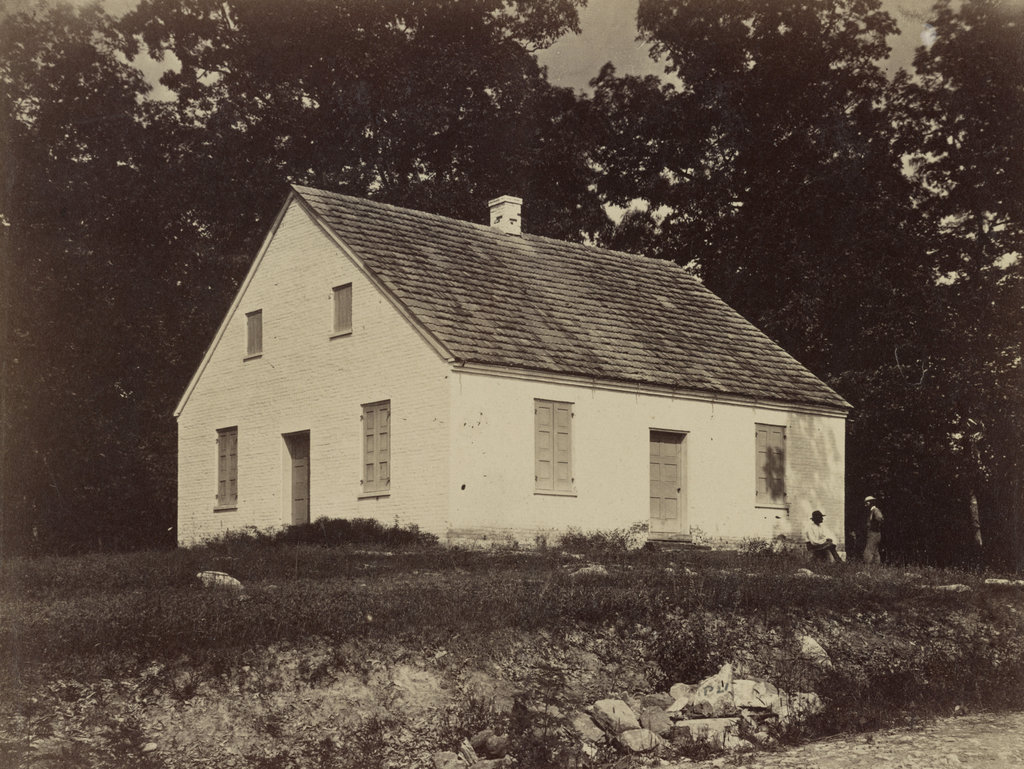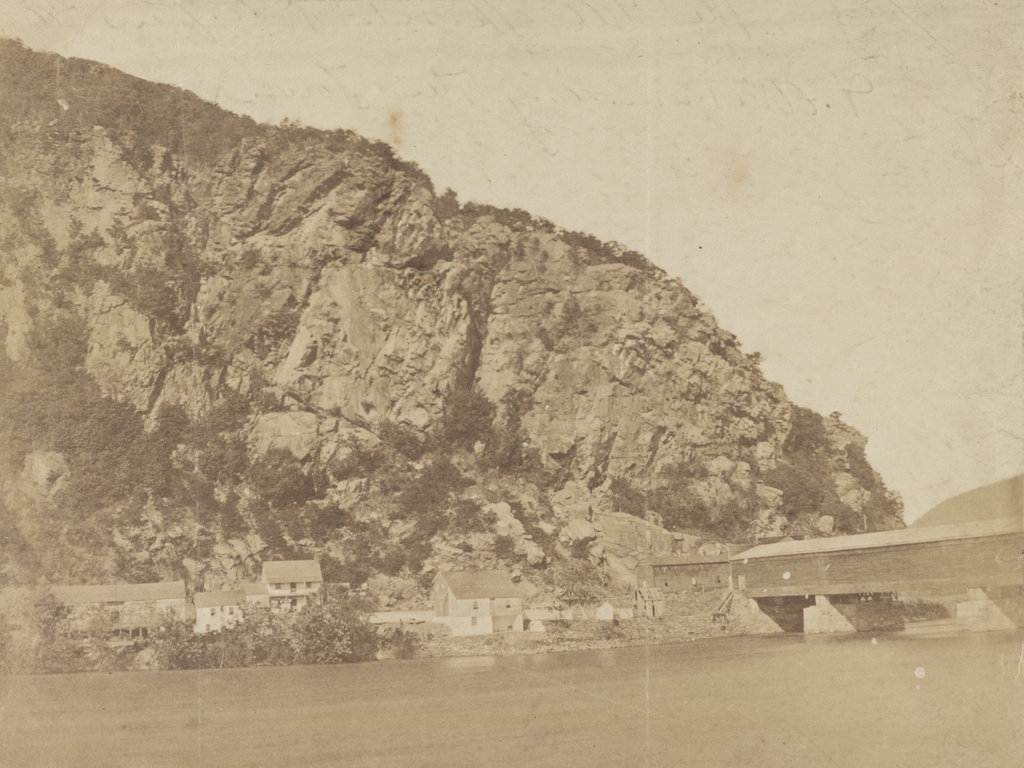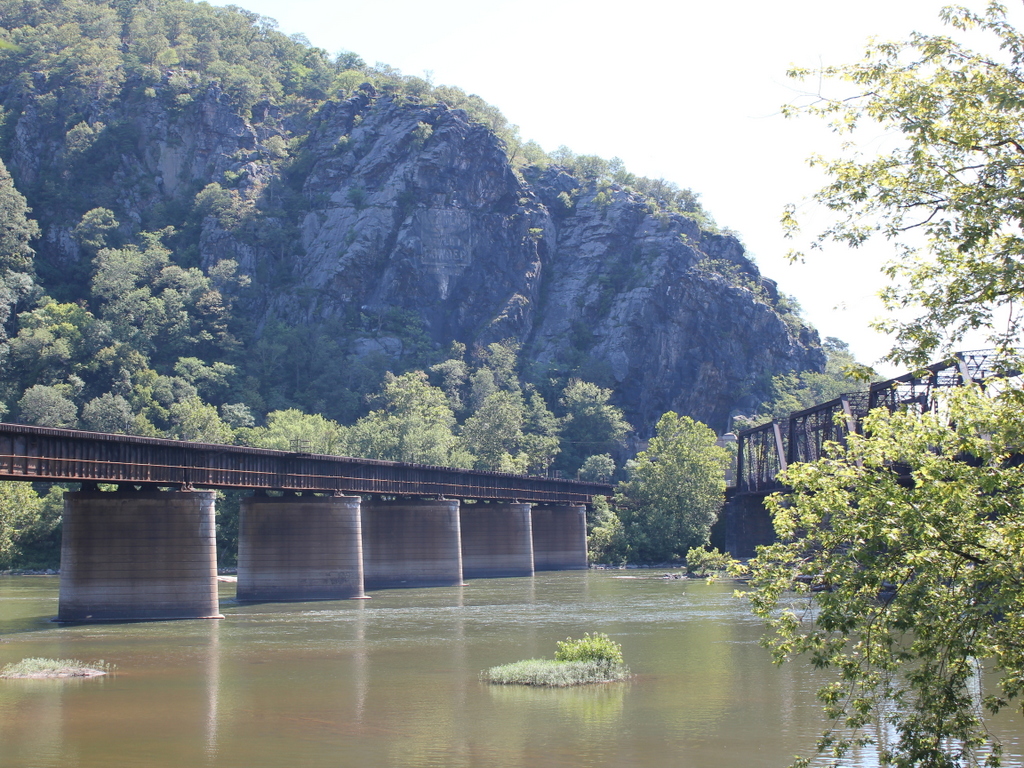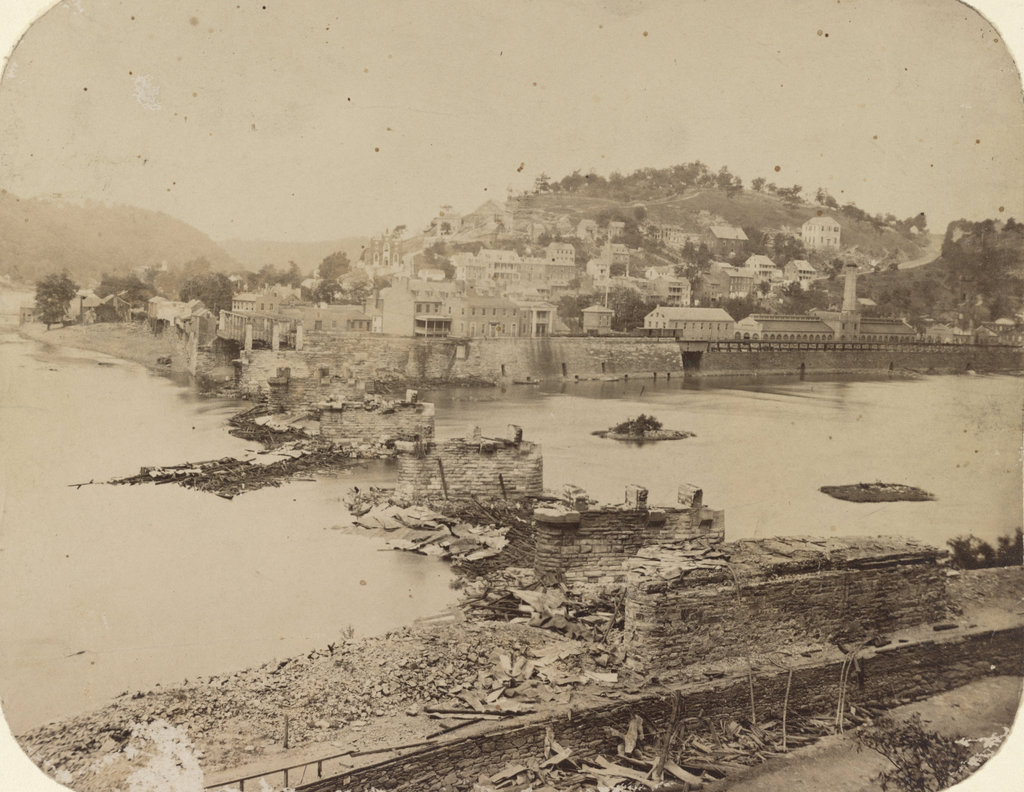The Dunker Church near Sharpsburg, Maryland, around 1862-1865. Photo by James Gardner, courtesy of the Library of Congress, Civil War Glass Negatives and Related Prints collection.
The church in 2021:
The first photo was taken by James Gardner, and it was published in 1865 in his brother Alexander’s Photographic Sketch Book of the War. It shows the Dunker Church, which had been a major landmark during the Battle of Antietam on September 17, 1862. The original church survived the battle only to be destroyed by a windstorm in 1921, but a replica was later built on the same site, as shown in the present-day scene.
The church was built in 1852 for the German Baptist Brethren, who were also known as the “Dunkers” because of their practice of baptism by immersion. Their beliefs were related to other Anabaptist churches like the Amish and the Mennonites, and one of their core values was pacifism. In light of that, it is particularly ironic that their meeting house here would become a focal point in the bloodiest single-day battle in American history.
The Battle of Antietam was the culmination of the first major Confederate offensive campaign into Union territory. Emboldened by recent victories such as the Second Battle of Bull Run, Robert E. Lee hoped to bring the war to the north. In doing so, one of his goals was to weaken the northern morale and their willingness to fight the war. To that end, Lee marched northwest from Virginia into Maryland. Along the way, he fought battles at Harpers Ferry, South Mountain, and Crampton’s Gap, before ending up in Sharpsburg, Maryland. There, he took a defensive position just outside of the town, with his left flank positioned here in the vicinity of the Dunker Church.
The battle began early in the morning of September 17, with a Union assault on the left flank led by General Joseph Hooker. Because of its visibility on the battlefield and its location in the midst of the Confederate defenses, the church became the focal point of the Union attack. However, despite having a small numerical advantage, Union soldiers made little progress in their advance, leading to a particularly bloody scene in a corn field about a half mile to the north of the church, where both sides suffered heavy casualties.
Reflecting on the events of the battle, Confederate General Thomas “Stonewall” Jackson described the scene here, writing:
The carnage on both sides was terrific. The hottest fight seemed to center about Dunker Church, where there were no less than four charges and counter-charges. Each army had taken and retaken the ground until it was literally carpeted with dead and dying men.
Over the course of the morning, the battle shifted away from the church. Much of the fighting in the middle stages of the battle centered around the “sunken road” to the southeast of the church, and later in the day the fighting was even further south, in the vicinity of Burnside’s Bridge. Throughout this, neither side made significant progress. The fighting was over by early evening, leaving over 2,000 Union soldiers dead and nearly 10,000 wounded, compared to 1,500 Confederates killed and over 7,700 wounded.
Although both sides suffered similar losses, the Battle of Antietam is generally regarded as an important strategic victory for the Union. In the aftermath of the battle, General Lee abandoned his attempts to invade the north, and instead brought his army back to Virginia. He would eventually attempt one more large-scale invasion of the north less than a year later, but he suffered an even more decisive loss at Gettysburg in July 1863.
In the meantime, the Dunker Church sustained significant damage during the battle, from bullets as well as artillery fire. Photographs taken in the immediate aftermath show a number of holes in the roof and in the brick walls. However, this damage was soon repaired, and the church was back in use by 1864. The first photo was taken about a year later, showing the exterior of the repaired building. The photo was taken by James Gardner, the younger brother of prominent Civil War photographer Alexander Gardner, and it was published in Gardner’s Photographic Sketchbook of the War after the end of the war.
Following the war, the church continued to be one of the most important symbols of the battle, but it also continued to be used as a church until 1899, when the congregation moved to a new building. Now vacant, the old building deteriorated over the next few decades, assisted by souvenir hunters who helped themselves to bricks from the walls. In the end, the humble brick church that had survived one of the deadliest battles of the Civil War was destroyed by a windstorm in 1921.
The site of the church later became a gas station, lunch counter, and souvenir stand, but in 1951 the property was purchased by the Washington County Historical Society and then transferred to the National Park Service. It became part of the Antietam National Battlefield, and in 1962 the church was reconstructed on the original foundation as part of the centennial of the battle.
Today, despite the church being a modern reconstruction with very little original material, this scene still has largely the same appearance as it had in the 1860s. Antietam is one of the best-preserved Civil War battlefields, and the reconstructed church remains one of its most distinctive landmarks. The building is open to the public, and its design is based on what the interior of the original church would have looked like in 1862.






